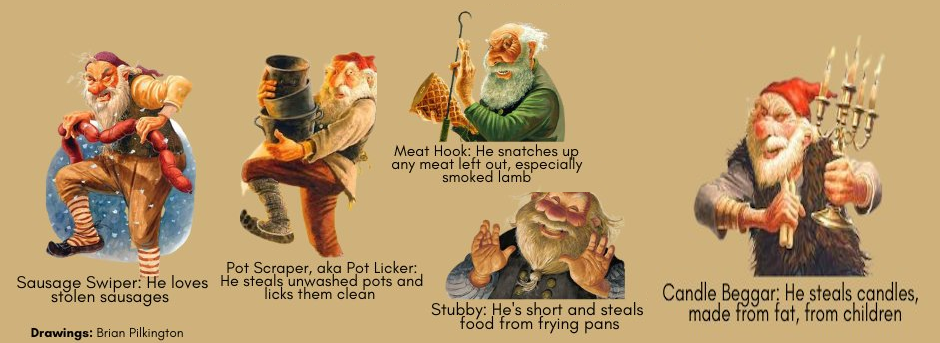Yuletide
Written by Anne Newman 21st December 2019 - updated 2023
Yule or Yuletide is a festival historically observed by the Germanic peoples and is said to be the original celebrations of Yule. Connected to the Wild Hunt, the god Odin, and the pagan Anglo-Saxon Modraniht was an event on what is now Christmas Eve that focused on collective female beings according to Bede. Tide - Old English tīd - means a period of time.
The events of Yule are generally said to have centred on Midwinter and feasting, drinking, and sacrifice (Norse and Germanic blót) were involved. From Denmark - Religion, magic, death and rituals
The Arabic traveller al-Tartuchi describes how the Viking town of Hedeby celebrated the winter solstice. “They celebrate a festival, at which all come to worship the god and to eat and drink. The one who slaughters a sacrificial animal erects stakes at the entrance to his farmyard and puts the sacrificial animal on them. This is so that people know that he is sacrificing in honour of his god.”
The sacrifices might be followed by a communal blót feast – a feast at which the participants ate and drank together. Sacrifices of animals were not the norm, but were primarily associated with magnates and kings.
Later Yule morphed into the term Christmastide. Many present-day Christmas customs and traditions, Yule Boar (Christmas Ham) and Yule singing (carol singing) came from pagan Yule traditions.
Medieval Christmas from Westerbone.com - Then as now, it was a season that involved decorating the home with garlands and wreaths. William Fitzstephen (a cleric and administrator in the service of Thomas Becket) writing in the 12th century recorded, “Every man’s house, as also their parish churches, was decked with holly, ivy, bay and whatsoever the season of the year afforded to be green.”
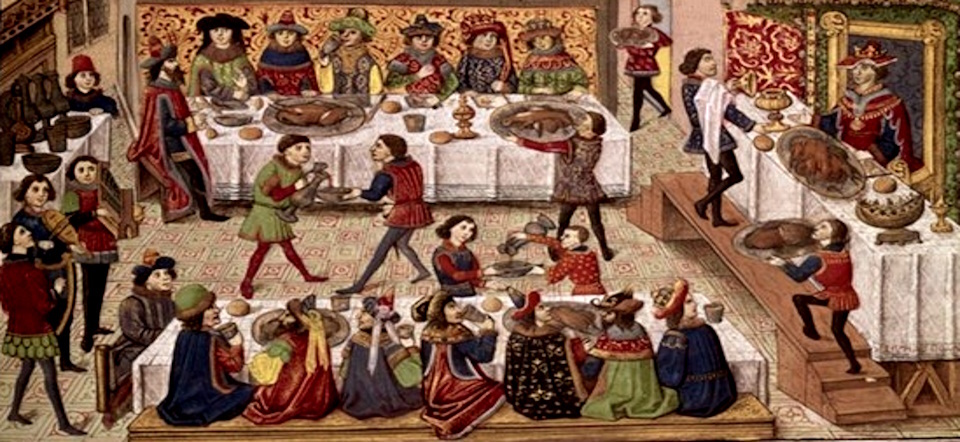
Traditions of Yule
Evergreens represent everlasting life and were traditionally hung around doorways and windows. Each has a symbolism of its own.
Mistletoe - Greatly revered by the Druids, this is the healer and protector. It is carefully cut to ensure it never touches the earth. It's magical properties are believed to be connected to the fact that it lives between the worlds, between sky/heaven and earth. The white berries of mistletoe represent the fertile white semen of the life-giving male. Which is where kissing under the mistletoe comes from!
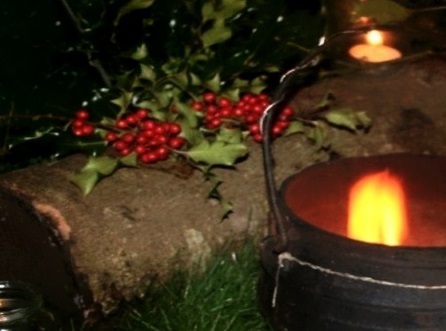
Ivy - Evergreen symbol of immortality and resurrection, growing in a spiral reminding us ofreincarnation and rebirth. Sacred to Osiris, where His death and resurrection was a central theme in Egyptian religion. Sacred also to Dionysys, god of vegetation, blossoming and the Return of Spring.
Yew is the Tree of rebirth as it sends up new trees from its roots and grows to a very great age. It is deeply connected with the spirit realms and the ancestors. Often used as the central 'world tree' in ritual spaces and was often planted in graveyards. Very poisonous.
Pine - It's branches bring healing and joy to the home, burning it will purify your rooms.
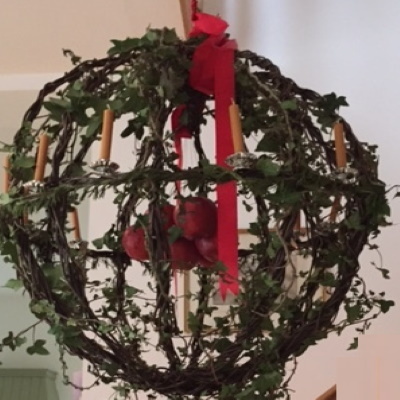
The Kissing Bough - At Yuletide it has often been customary to make a decoration using two hoops, one thrust through the other, and bound with evergreens, holly and ivy, and rosy cheeked apples specially reserved for the occasion. Inside, dolls are hung, male and female, with other brightly coloured baubles. At the bottom of the decoration a bunch of mistletoe is carefully tied, and the whole tableau is suspended in the middle ofthe room, the centre of attention. Every berry on the mistletoe bears the promise of a kiss, and for every kiss given or taken a berry is removed. When all the berries are gone, the kissing has to stop!
The Wreath - It was traditional to make wreaths from evergreen - the Wheel of Life as evergreen. These were hung on doors or laid horizontally and decorated with candles - later becoming the Christian Advent Wreath.
The Yule tree was introduced into modern times by the German Prince Albert in Victorian times. Pagan families would bring a live tree into the home so the wood spirits would have a place to keep warm in the cold winter months - food and treats were hung on the branches for the spirits to eat. In ancient Rome, pine trees were an essential part of Goddess groves. On the eve of the Midwinter Solstice, Roman priests would cut down a pine tree, decorate it and carry it ceremonially to the temple celebrations. People decked their homes with boughs of evergreen trees and bushes in pots. Pines and firs were cherished as a symbol of rebirth and life in the depth of winter. It was the festival of Saturnalia. Chester - the city that celebrates Saturnalia
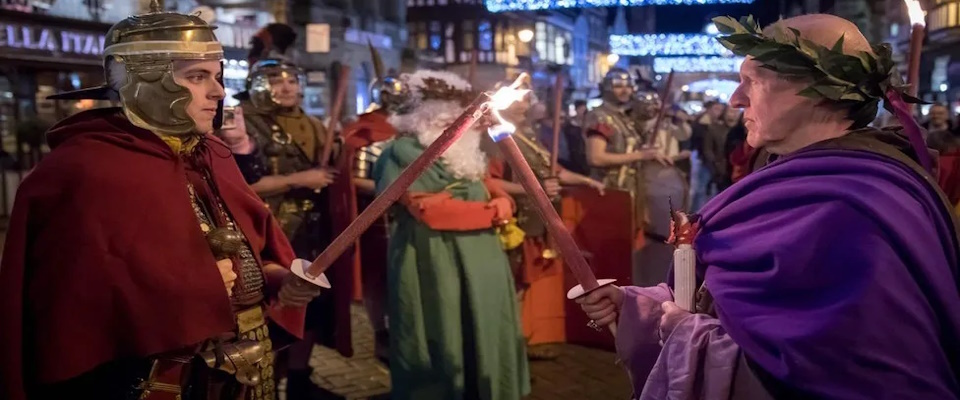
Yule Log
Different regions have variations of the main tradition of having a special log on the open fire - to enhance the strength of the sun, to warm the Holy Family, to give the family protection. A balance to the outdoors Summer Solstice fires.
The yule log, the people bring it in, on Christmas Eve and burn it, but they keep a bit of it for the coming of the new year.Duchas.ie - from Co. Sligo
It was an ancient Irish Christmas custom to provide a huge stout stump of fir and place it behind the fire on Xmas night. The was called the "Yule Log". It was so large that it used to be kept burning in the fire until the 12th day of Christmas. from Co. Cork
The Christmas block or Yule Log was carried into the house on Christmas Eve. It was supposed to be the roots of a large tree. This was burned on every holiday and it was supposed that there was a small bit left to light the fire every day for a year. Then the ashes were put out in the outhouses. from Donegal
In 2009 we shared a Yule log - It is a tradition that the new fire be seeded by a spark from the old
so that there is a continuity of tradition. We will be burning last
years Yule log and lighting a new one to mark the season. The Yule log
is of course a symbol of life and emphasising life’s existence at this
time of the year when Nature seems most barren. It is a symbol of hope.
In these days of heat pumps and warm houses few of us have an open fire and we now eat a tasty chocolate log.
The Walking Stones of the Yules.
According to Orcadian folklore, once a year, usually at New Year, some of the standing stones are said to ‘walk’. These stones were once giants which had been turned to stone. At New Year they move from their resting place to nearby bodies of water where they dip their heads down and “drink” the water. The best known of these stones are the Yetnasteen and the Stane o’ Quoybune, Orkney
The idea of giants being turned to stone, often by the light of the rising sun, as well as walking stones, is widespread throughout Scotland, England, Ireland and Wales. This would suggest that the tradition has a very ancient origin, perhaps involving some form of stone and water festival.
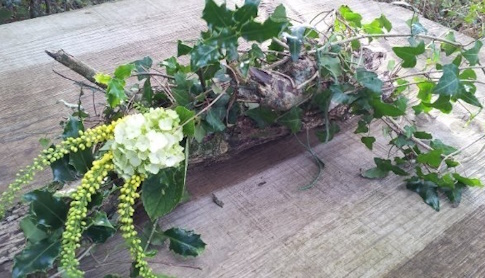 | 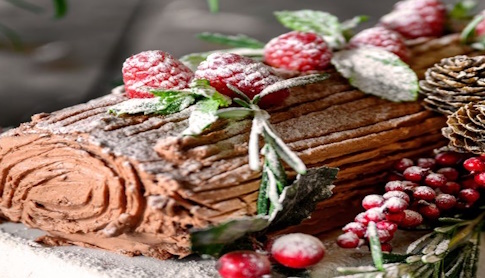 |
Candles - This is the festival of light out of darkness and the tradition of lighting candles is ever popular. Red, green and the gold of the Returning Sun are the colours of Yule. Deck your home and altar with evergreens and candles.
Gift Giving - the giving and exchanging of gifts has always been a vibrant tradition of this festival.
Yule Cat ...
is a mythical creature from Icelandic folklore. A vicious feline monster that roams the land looking for people to eat. It preys on people (especially children) who aren’t wearing new clothes. There is a verse -Yule Cat by Johannes ur Kotlum - which starts:
You all know the Yule Cat and that Cat was huge indeed. People didn’t know where he came from or where he went. He opened his glaring eyes wide, the two of them glowing bright. It took a really brave man to look straight into them.
The rather odd connection to having to wear new clothes is usually connected to the understanding that farmers, as an incentive for their workers to finish processing the autumn wool before Christmas, would reward them with new clothes. But those who did not work would get nothing and were thus preyed upon by the monstrous cat.
more information here: Icelandic Yule Cat
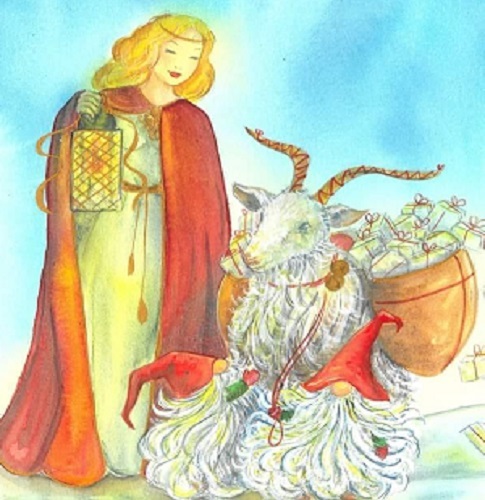
Yule Goat...
The Scandanavian Yule goat is
usually made of straw. It's origins possibly linked to the Norse god
Thor, who rode the sky in a chariot drawn by two goats, Tanngrisnir and
Tanngnjóstr, and to tradition of the last harvest sheaf which was said
to have magical properties as the spirit of the harvest. This would be
saved for the Yule celebrations, called among other things Yule goat
(Julbocken).
In a Scandinavian custom similar to the English
tradition of wassailing, held at either Christmas or Epiphany, young men
in costumes would walk from house to house singing songs, enacting
plays and performing pranks.
This tradition is known from the 17th century and still continues in certain areas. The group of Christmas characters would often include the Yule goat, a rowdy and sometimes scary creature demanding gifts.
Iceland Lads
13 Yule Lads. They live together in a cave, hiding in the mountains - or sometimes coming over the ocean. Starting on 12 December, one by one they visit homes during the night. Children place one of their shoes on the windowsill each day. For good boys and girls, the Yule Lad will leave sweets. For the naughty there will be rotting potatoes.


